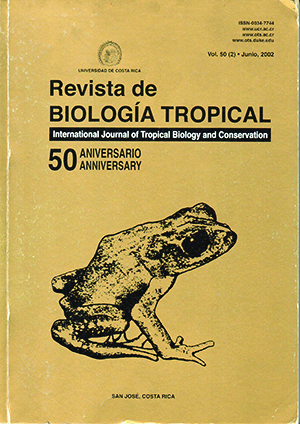Abstract
The research is focused on the relationship between population growth and conservation of the forest on the Osa Peninsula. Data of the geo-referenced censuses and information on land-use, derived from satellite images and aerial photography, were integrated into a GIS. We undertook an historical inventory of the changes in the population and the forest coverage, and the key events in the land tenure and economy of the region. Deforestation, reforestation, and fragmentation of the forest during the period 1980 - 1995 were analyzed. Relationships with the population potential, derived from the 1984 Costa Rican censuses, were identified, and the effects of third variables were controlled such as distances to the roads, rain, distances to the forest frontier, level of protection, etc. Both strong and significant associations between 1984 population potential and the three processes were detected. The probability of deforestation is null in unpopulated areas, 35% in areas with 25 - 30 potential farmers and to 65% in areas with 50 farmers and over. The probability of reforestation decreases from 100% to 28% and to 18% in these three categories. This kind of relationship persists in the multivariable analysis. An increase of 0.63% in the number of household, results in an increment of 1% in the risk of deforestation (elasticity). The elasticity in the chances of reforestation is -0.37 and 1% in fragmentation of the forest. An evaluation in the risk of deforestation for the period 1995 - 2005 was done. The most recent population data were used and it identifies several geographic areas with high deforestation risk.Comments

This work is licensed under a Creative Commons Attribution 4.0 International License.
Copyright (c) 2002 Revista de Biología Tropical
Downloads
Download data is not yet available.


